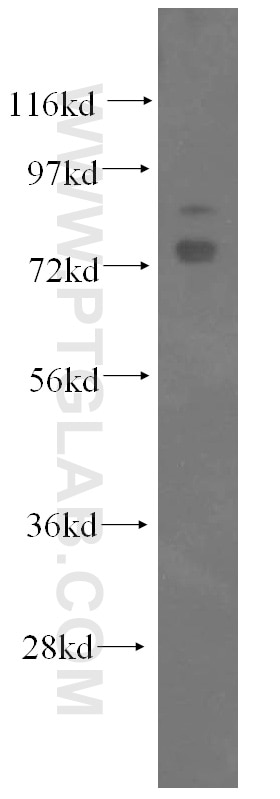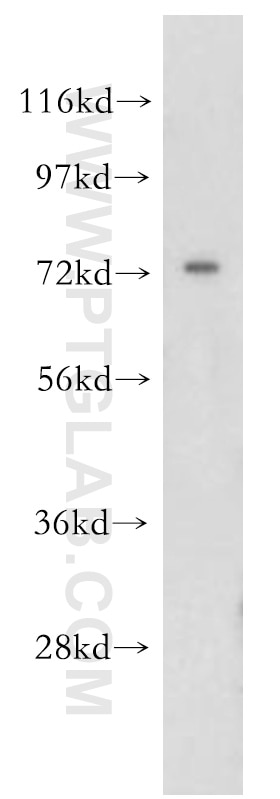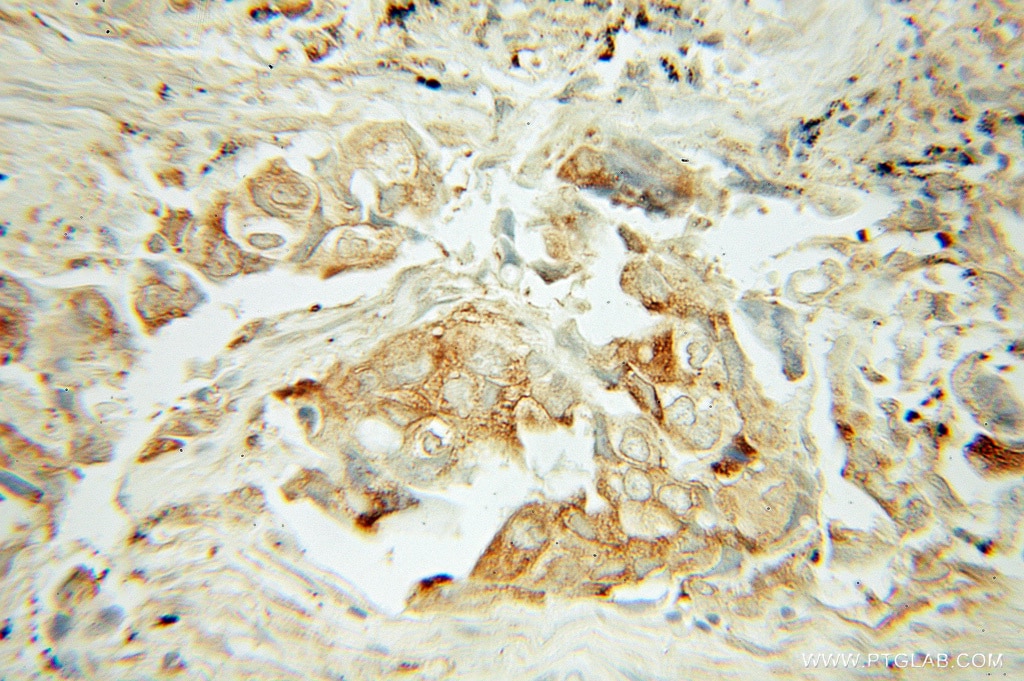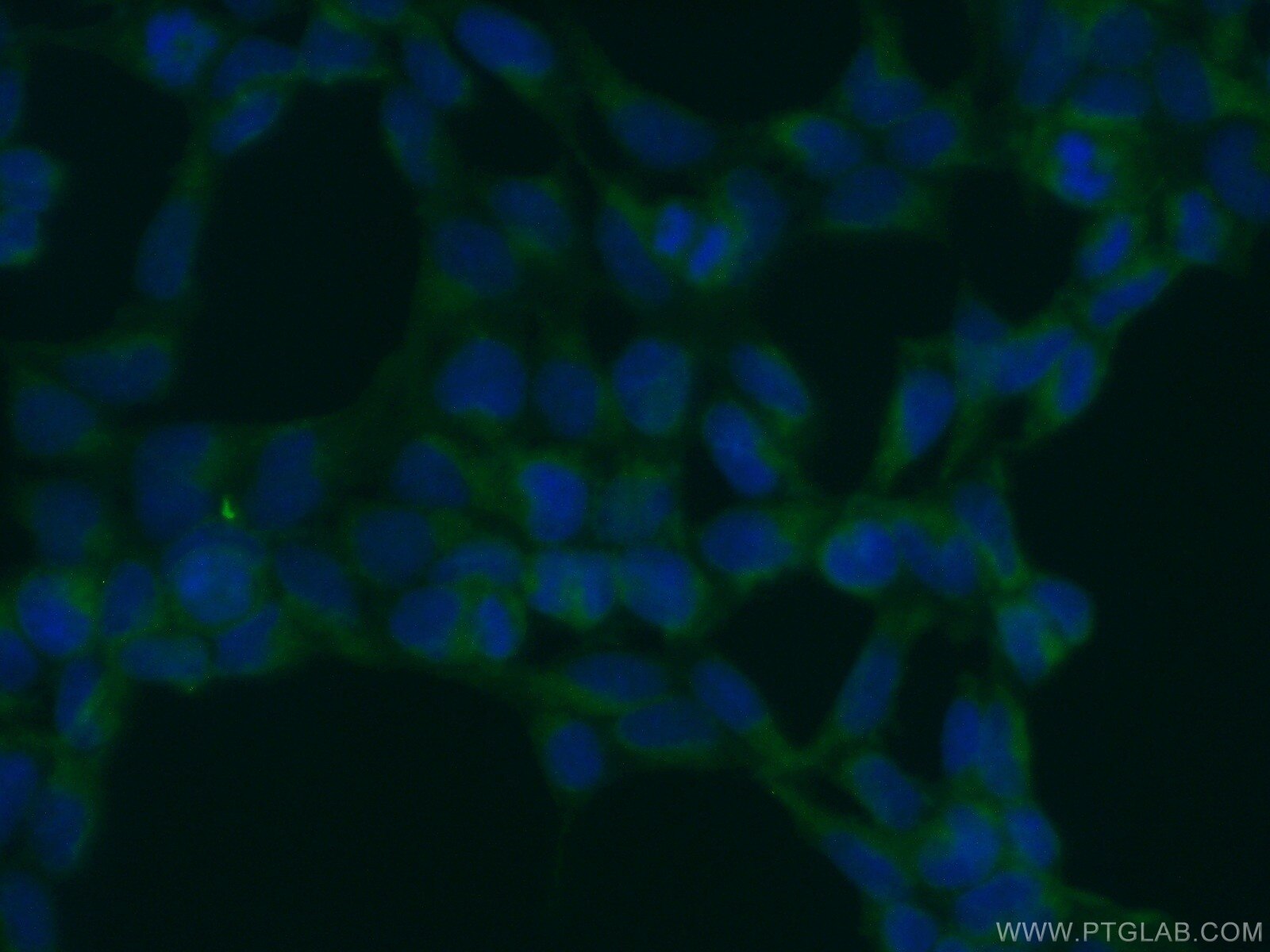- Phare
- Validé par KD/KO
Anticorps Polyclonal de lapin anti-OS9
OS9 Polyclonal Antibody for WB, IF, IHC, ELISA
Hôte / Isotype
Lapin / IgG
Réactivité testée
Humain
Applications
WB, IHC, IF/ICC, ELISA
Conjugaison
Non conjugué
N° de cat : 10061-1-AP
Synonymes
Galerie de données de validation
Applications testées
| Résultats positifs en WB | cellules HEK-293, cellules HeLa |
| Résultats positifs en IHC | tissu de cancer du poumon humain, tissu de cancer de la prostate humain il est suggéré de démasquer l'antigène avec un tampon de TE buffer pH 9.0; (*) À défaut, 'le démasquage de l'antigène peut être 'effectué avec un tampon citrate pH 6,0. |
| Résultats positifs en IF/ICC | cellules HEK-293, |
Dilution recommandée
| Application | Dilution |
|---|---|
| Western Blot (WB) | WB : 1:200-1:1000 |
| Immunohistochimie (IHC) | IHC : 1:20-1:200 |
| Immunofluorescence (IF)/ICC | IF/ICC : 1:50-1:500 |
| It is recommended that this reagent should be titrated in each testing system to obtain optimal results. | |
| Sample-dependent, check data in validation data gallery | |
Applications publiées
| KD/KO | See 4 publications below |
| WB | See 7 publications below |
| IF | See 1 publications below |
Informations sur le produit
10061-1-AP cible OS9 dans les applications de WB, IHC, IF/ICC, ELISA et montre une réactivité avec des échantillons Humain
| Réactivité | Humain |
| Réactivité citée | Humain |
| Hôte / Isotype | Lapin / IgG |
| Clonalité | Polyclonal |
| Type | Anticorps |
| Immunogène | OS9 Protéine recombinante Ag0106 |
| Nom complet | osteosarcoma amplified 9, endoplasmic reticulum associated protein |
| Masse moléculaire calculée | 76 kDa |
| Poids moléculaire observé | 73 kDa |
| Numéro d’acquisition GenBank | BC000532 |
| Symbole du gène | OS9 |
| Identification du gène (NCBI) | 10956 |
| Conjugaison | Non conjugué |
| Forme | Liquide |
| Méthode de purification | Purification par affinité contre l'antigène |
| Tampon de stockage | PBS avec azoture de sodium à 0,02 % et glycérol à 50 % pH 7,3 |
| Conditions de stockage | Stocker à -20°C. Stable pendant un an après l'expédition. L'aliquotage n'est pas nécessaire pour le stockage à -20oC Les 20ul contiennent 0,1% de BSA. |
Informations générales
OS-9 is a ubiquitously expressed ensoplasmic reticulum (ER)-associated protein originally identified as being amplified in certain osteosarcomas. It functions in ER quality control and ER-associated degradation (ERAD). There are three isoforms of this protein: OS-9.1, OS-9.2 and OS-9.3. The longest isoform, OS-9.1, contains 667 aa, OS-9.2 lacks aa 535-589, whereas OS-9.3 lacks aa 456-470 and 535-589. OS-9.1 and OS-9.2 are N-glycosylated, ubiquitously expressed in human tissues, and amplified in tumors. Isoform 2 is the major isoform detected in all cell types examined. This antibody can recognize all three isoforms of OS-9.
Protocole
| Product Specific Protocols | |
|---|---|
| WB protocol for OS9 antibody 10061-1-AP | Download protocol |
| IHC protocol for OS9 antibody 10061-1-AP | Download protocol |
| IF protocol for OS9 antibody 10061-1-AP | Download protocol |
| Standard Protocols | |
|---|---|
| Click here to view our Standard Protocols |
Publications
| Species | Application | Title |
|---|---|---|
Nat Cell Biol OS-9 and GRP94 deliver mutant alpha1-antitrypsin to the Hrd1-SEL1L ubiquitin ligase complex for ERAD.
| ||
J Biol Chem OS-9 regulates the transit and polyubiquitination of TRPV4 in the endoplasmic reticulum.
| ||
J Biol Chem Human OS-9, a lectin required for glycoprotein endoplasmic reticulum-associated degradation, recognizes mannose-trimmed N-glycans. | ||
J Biol Chem Human XTP3-B forms an endoplasmic reticulum quality control scaffold with the HRD1-SEL1L ubiquitin ligase complex and BiP. | ||
J Biol Chem SEL1L protein critically determines the stability of the HRD1-SEL1L endoplasmic reticulum-associated degradation (ERAD) complex to optimize the degradation kinetics of ERAD substrates.
| ||
FEBS J Endoplasmic reticulum lectin XTP3-B inhibits endoplasmic reticulum-associated degradation of a misfolded α1-antitrypsin variant.
|





